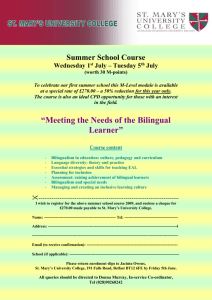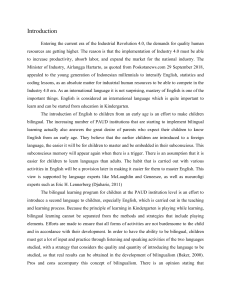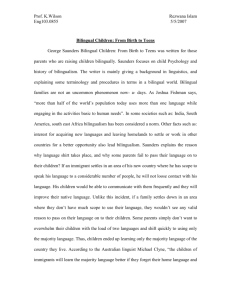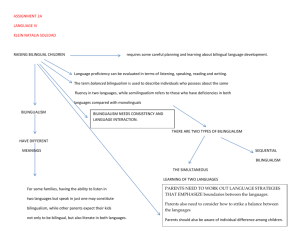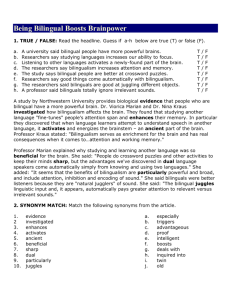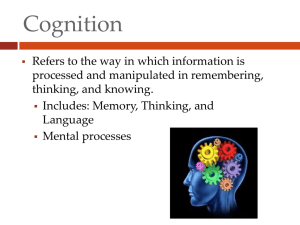Study guide 5
advertisement
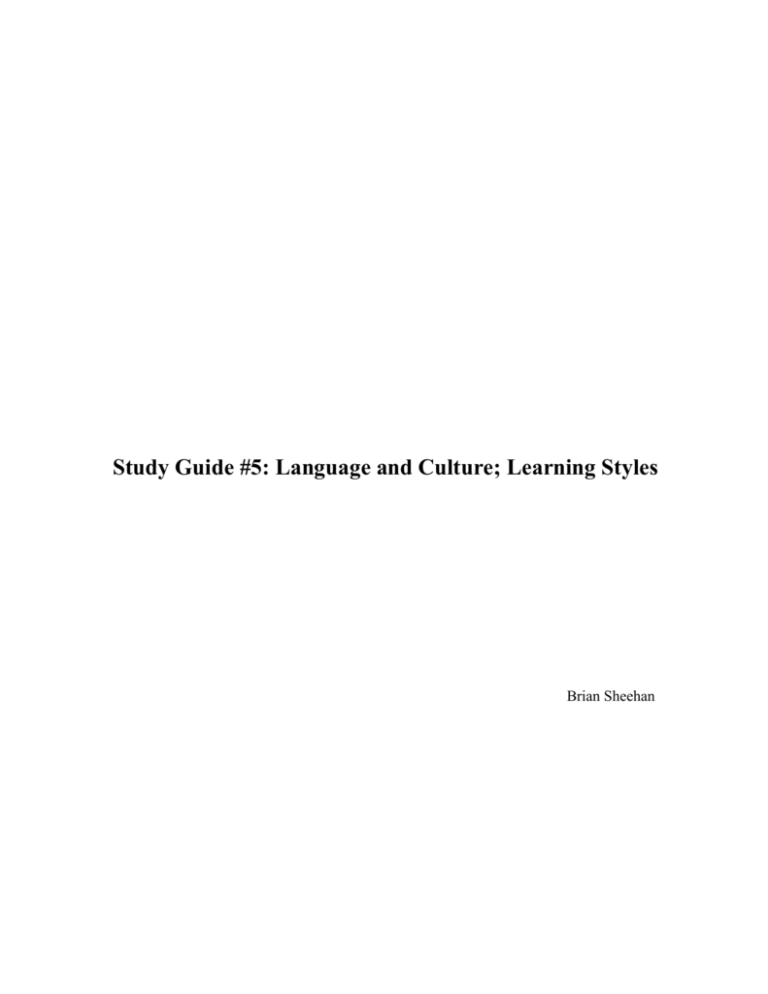
Study Guide #5: Language and Culture; Learning Styles Brian Sheehan A. Garcia, Chapter 5 1. What is metalinguistic awareness? Metalinguistic awareness is to be consciously aware of how we use communication. It is the foundation for distinguishing diversity within the communicative activities going on around us all the time. 2. How is language used as a social instrument and what are two important sociocultural variables that may affect a child's motivation to learn a second language? In social situations, the basics of language, such as phonology, vocabulary and grammar are only a small part of language communication. A large part of effective communications in social situations is based on language pragmatics, which refers not only to the rules of the language but also to the generally accepted notions about appropriate and effective communications. This allows us to adjust our language for different audiences in conversation, in writing, and in discourse. Part of language pragmatics is to understand that individuals whose cultures are different often have different rules for language use. Two important sociocultural variables that may affect a child’s motivation to learn a second language are: 1) standardized language assessment tests vs. authentic assessment, and 2) the barrier of academic English. Standardized language assessments lack a valid link to new, more process-oriented curricula. This means that these measures consistently misrepresent a student’s actual achievements, often penalizing and demoralizing the student. These assessments have elevated form over content and created decontextualized settings for evaluation that are far removed from the needs, interests, or passions of the writer. Academic English creates yet another stumbling block for the second language learner. Academic English is a specific type of English used in reading and writing academic papers and in discussing academic issues. Students must have competence in academic English to do well on high school qualifying tests, for example. Because bilingual students often have a more difficult time in basic reading and writing, they are extremely handicapped when up against academic English, which to the uninitiated contains confusing words (words that have a different meaning in the oral context) and words that are very technical. In this country, academic English serves as a gatekeeper, keeping many bilingual students out of higher education despite the fact that many bilingual students are accomplished orally if not in reading and writing. B. Gollnick and Chinn, Chapter 7 1. What is the definition of "language"? How does American Sign Language (ASL) fit into that definition? 2. What are "subtractive bilingualism" and "additive bilingualism"? 3. What are dialects? 4. Why is Black English (or Ebonics) a controversial issue in education?
